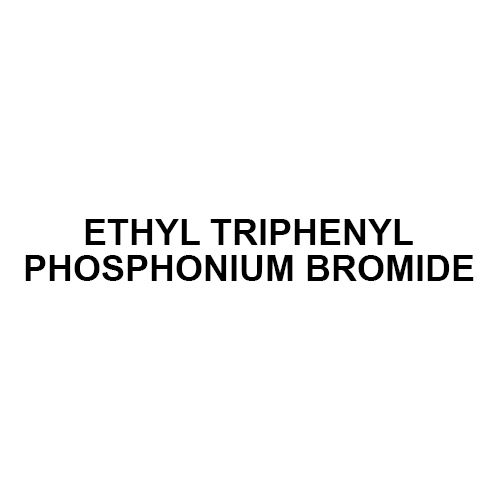CETYL TRIMETHYL AMMONIUM BROMIDE
Product Details:
- Melting Point 237 to 243 C (459 to 469 F; 510 to 516 K) (decomposes)
- Molecular Formula C19H42BrN
- Storage Room Temperature
- CAS No 57-09-0
- Grade Tech Grade
- Usage Industrial
- Appearance white powder
- Click to View more
X
CETYL TRIMETHYL AMMONIUM BROMIDE Price And Quantity
- 25 Kilograms
CETYL TRIMETHYL AMMONIUM BROMIDE Product Specifications
- Industrial
- 57-09-0
- Room Temperature
- C19H42BrN
- Pharmaceutical Industry
- white powder
- 237 to 243 C (459 to 469 F; 510 to 516 K) (decomposes)
- Tech Grade
- Powder
CETYL TRIMETHYL AMMONIUM BROMIDE Trade Information
- Cash Advance (CA) Letter of Credit (L/C)
- 25 Kilograms Per Day
- 1 Week
- Yes
- Asia Australia Central America North America South America Eastern Europe Western Europe Middle East Africa
- All India
Product Description
Cetyl trimethyl ammonium bromide (CTAB) is a quaternary ammonium compound commonly used in chemistry and biology. It is also known as hexadecyltrimethylammonium bromide. CTAB is a cationic surfactant, meaning it has a positively charged head group and a long hydrophobic tail.
Cetyl trimethyl ammonium bromide finds various applications:
1. Surfactant: CTAB acts as a surfactant, meaning it can lower the surface tension between two substances. Its often used in products like shampoos, conditioners, and other personal care products.
2. Emulsifier: Due to its surfactant properties, CTAB can help in the formation and stabilization of emulsions, where two immiscible liquids (like oil and water) are combined.
3. DNA and Protein Isolation: CTAB is commonly used in molecular biology and biochemistry for the isolation of DNA and proteins. It helps in the extraction and purification of nucleic acids by disrupting the cell membrane and releasing the cellular contents.
4. Nanoparticle Synthesis: CTAB is used in the synthesis of nanoparticles, particularly gold nanoparticles. It acts as a stabilizing agent and controls the size and shape of the nanoparticles during synthesis.
5. Microemulsions: CTAB is utilized in the formation of microemulsions, which are stable dispersions of oil and water stabilized by surfactants. These microemulsions find applications in various fields including pharmaceuticals, cosmetics, and food industries.
FAQs of CETYL TRIMETHYL AMMONIUM BROMIDE:
Q: What is the molecular formula of CETYL TRIMETHYL AMMONIUM BROMIDE?
A: The molecular formula of CETYL TRIMETHYL AMMONIUM BROMIDE is C19H42BrN.Q: What is the appearance of CETYL TRIMETHYL AMMONIUM BROMIDE?
A: CETYL TRIMETHYL AMMONIUM BROMIDE appears as a white powder.Q: What is the storage recommendation for CETYL TRIMETHYL AMMONIUM BROMIDE?
A: CETYL TRIMETHYL AMMONIUM BROMIDE should be stored at room temperature.Q: What is the melting point of CETYL TRIMETHYL AMMONIUM BROMIDE?
A: The melting point of CETYL TRIMETHYL AMMONIUM BROMIDE is 237 to 243 C (459 to 469 F; 510 to 516 K) (decomposes).Q: What is the usage of CETYL TRIMETHYL AMMONIUM BROMIDE?
A: CETYL TRIMETHYL AMMONIUM BROMIDE is used in the pharmaceutical and industrial industries.Enter Buying Requirement Details

 English
English Spanish
Spanish French
French German
German Italian
Italian Chinese (Simplified)
Chinese (Simplified) Japanese
Japanese Korean
Korean Arabic
Arabic Portuguese
Portuguese







